Looking for a quality brew without breaking the bank? If you're a coffee enthusiast on a tight budget, fret not! You don't need expensive equipment to savor a top-notch cup.

Manual coffee grinders are not only wallet-friendly but also allow for a grinding experience tailored to your unique taste. Dive into this step-by-step guide to uncover the magic of manual coffee grinding, understand its benefits, and learn how to keep it in prime condition.
What are Manual Coffee Grinders?
Manual coffee grinders are meticulously engineered devices designed to give you complete control over the coffee grinding process. By grinding coffee beans manually, you can achieve a more precise and consistent grind size, which directly impacts the flavor and quality of your coffee.
The roots of coffee grinding trace back to the origins of coffee itself, with the very first coffee grinder being the mortar and pestle. In regions like Ethiopia, the Middle East, and early coffee-drinking countries, people would employ a small club and bowl to meticulously grind coffee beans for brewing. This historical practice reflects the enduring importance of achieving the right grind for the perfect cup of coffee.
Parts of a Manual Coffee Grinder

Before we delve into the step-by-step guide for using a manual coffee grinder, let's first understand the fundamental components that make up this intricate tool. In this section, we'll take a closer look of the various parts that come together to create the art of grinding coffee beans manually.
By familiarizing ourselves with the anatomy of the coffee grinder, we'll be better equipped to navigate the grinding process with precision and insight.
-
Burr Mechanism

The burr mechanism is the heart of a manual coffee grinder. It consists of two burrs, which are precision-engineered discs with sharp edges. These burrs are typically made of durable materials such as stainless steel or ceramic.
As you rotate the handle, the beans pass between the burrs, which crush and grind them into uniformly sized particles. The advantage of burr grinders over blade grinders is that they produce a more even grind, ensuring optimal extraction and a rich, flavorful cup of coffee.
-
Adjustment Dial

Manual coffee grinders often feature adjustable settings to control the grind size. These settings allow you to finely tune the coarseness or fineness of the coffee grounds to suit different brewing methods. Typically, the adjustment settings can be modified by twisting a knob or turning a dial located either at the bottom or on the side of the grinder.
By selecting the appropriate grind size for your brewing method, whether it's a coarse grind for a French press or a fine grind for espresso, you can achieve the desired flavor and extraction.
-
Handle and Crank

The handle and crank of a manual coffee grinder provide the mechanical leverage needed to rotate the burr mechanism. They are designed to be comfortable to grip and easy to turn. The handle is typically attached to a long, sturdy rod that connects to the burr mechanism.
As you rotate the crank in a smooth and steady motion, the burrs grind the coffee beans consistently and efficiently. The handle and crank mechanism ensure that you have full control over the grinding speed and can adjust it according to your preference.
-
Grounds Chamber

The grounds chamber is the compartment where freshly ground coffee is collected. It is usually located at the bottom of the grinder and is designed to hold the coffee grounds securely. Some manual grinders feature a detachable grounds chamber, making it convenient to transfer the coffee grounds to your brewing device. The grounds chamber is an essential part of the grinder as it keeps the ground coffee contained and ready to be used for brewing.
By utilizing a manual coffee grinder, you gain the ability to finely control the grind size, resulting in a more consistent extraction and a superior cup of coffee. The combination of a precision burr mechanism, adjustable settings, a comfortable handle, and a dedicated grounds chamber all work together to enhance the flavor and aroma of your coffee.
Embracing the art of manual coffee grinding allows you to fully appreciate the journey from whole beans to a perfect grind, unlocking the true potential of your favorite coffee beans.
Benefits of Using a Manual Coffee Grinder
Using a manual coffee grinder offers numerous advantages that can elevate your coffee brewing experience to new heights. Let's explore the exceptional benefits of incorporating a manual coffee grinder into your daily coffee routine:-
Enhanced Flavor Precision -Manual coffee grinders provide unparalleled control over the grind size, resulting in a more precise extraction. The consistent particle size achieved through manual grinding ensures even extraction of flavors from the coffee beans, leading to a fuller, more balanced, and flavorful cup of coffee. By adjusting the grind size according to your brewing method and personal preference, you can unlock the nuances and complexities of your coffee beans, creating a truly customized and delightful coffee experience.
-
Portable Brewing Freedom -Unlike their electric counterparts, manual coffee grinders are compact, lightweight, and do not require electricity. This portability opens up a world of possibilities for coffee enthusiasts on the go. Whether you're camping, traveling, or simply enjoying a picnic in the park, a manual coffee grinder allows you to grind fresh beans wherever you are. With a manual grinder in your backpack or suitcase, you can indulge in the pleasure of freshly ground coffee, no matter your location.
-
Quiet and Meditative Ritual: The manual grinding process offers a serene and meditative ritual that can enhance your overall coffee experience. Unlike electric grinders which can be noisy and disruptive, manual coffee grinders operate quietly, allowing you to immerse yourself in the process and fully appreciate the aroma and anticipation of freshly ground coffee. The rhythmic motion of turning the handle and feeling the resistance of the beans being ground adds a sensory element to your brewing routine, making it a calming and enjoyable activity.
-
Durability and Longevity: Manual coffee grinders are often built to last, with high-quality materials and precise craftsmanship. They have fewer mechanical parts compared to electric grinders, reducing the risk of malfunctions or breakdowns. With proper care and maintenance, a manual coffee grinder can become a trusted companion in your coffee journey, providing consistent performance and reliable results for years to come.
Preparing the Manual Coffee Grinder
Now that you know the components and benefits that a manual coffee grinder offers, it's time to delve into the essential steps for preparing the grinder to ensure a remarkable coffee brewing experience. Proper preparation sets the foundation for achieving the perfect grind and extracting the full flavors from your coffee beans. In this section, we will explore two crucial aspects of preparation: choosing the right coffee beans and selecting the appropriate grind size.
A. Choosing the Right Coffee Beans

1. Use freshly roasted whole coffee beans for optimal flavor
When using a manual coffee grinder, the quality of the coffee beans is paramount. Opt for freshly roasted whole beans rather than pre-ground coffee. Whole beans retain their flavor and aroma for longer periods, ensuring a more vibrant and enjoyable cup of coffee.
Grinding the beans just before brewing allows you to capture the full spectrum of flavors and aromas locked within the beans.
2. Select beans with a consistent size and density
When it comes to manual grinding, choosing the right coffee beans is crucial for a consistent and enjoyable coffee experience. Opt for beans that exhibit a consistent size and density, as this ensures a more uniform grind.
Aim for medium roast beans, as they are generally easier to grind manually compared to darker or oilier beans. Additionally, prioritize beans with a uniform shape and texture, as they contribute to a more consistent grind size, leading to optimal extraction and a delightful flavor in your coffee.
B. Selecting the Grind Size
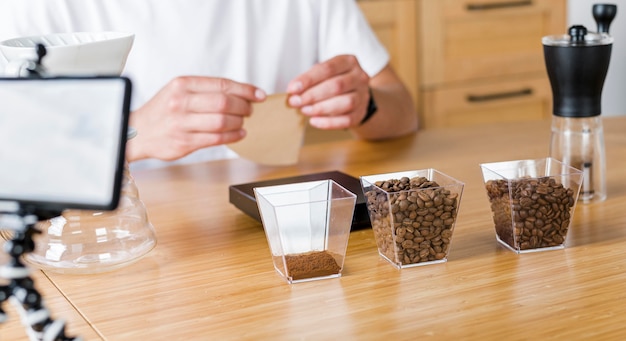
The grind size plays a crucial role in determining the extraction rate and flavor profile of your coffee. Different brewing methods require specific grind sizes to achieve the desired results. Coarser grinds are ideal for French press and cold brew, as they allow longer extraction times. Finer grinds, on the other hand, are suitable for espresso and pour-over methods, where the water passes through the coffee quickly.
Meanwhile, here are examples and recommendations for grind sizes based on popular brewing techniques:
-
French Press: Use a coarse grind resembling sea salt to achieve optimal extraction without over-extraction.
-
Pour-Over (e.g., Hario V60 or Chemex): Opt for a medium-fine grind, similar to granulated sugar, for a balanced extraction and clarity in flavor.
-
Espresso: Choose a fine grind resembling powdered sugar to facilitate the proper extraction within a short brewing time.
-
Aeropress: Experiment with a range of grind sizes, but a medium-fine grind similar to table salt often produces excellent results.
-
Cold Brew:Use a coarse grind to allow for a longer steeping time and extract the rich flavors without excessive bitterness.
Remember that these recommendations are a starting point, and you can adjust the grind size based on your personal taste preferences. The key is to achieve a consistent grind size that matches the brewing method you choose, allowing for optimal extraction and a delightful coffee experience.
Step-by-Step Guide to Using a Manual Coffee Grinder
Step 1: Adjusting the Grind Size
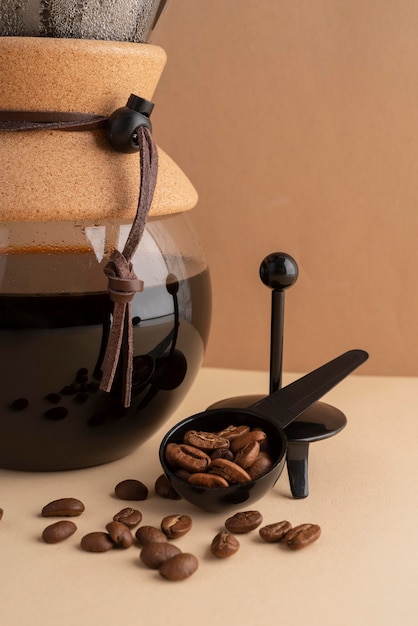
-
To set the desired grind size on the manual coffee grinder, locate the adjustment settings. These are typically found on the body of the grinder or near the burr mechanism.
-
Start with medium grind size and make incremental adjustments based on your preference. Turn the adjustment knob or dial clockwise for a finer grind or counterclockwise for a coarser grind. Take note of the reference points or markings on the grinder for consistency.
Step 2: Assembling the Grinder

-
Begin by gathering the various components of the manual coffee grinder, including the burr mechanism, handle, crank, and grounds chamber.
-
Assemble the grinder by securely attaching the handle to the rod or axle connected to the burr mechanism. Ensure that all components fit snugly and are aligned correctly to prevent any wobbling or instability during grinding.
Step 3: Adding Coffee Beans

-
Determine the appropriate amount of coffee beans needed for your desired brew. As a general guideline, a ratio of 1:16 (coffee to water) is commonly used. Adjust based on your taste preferences.
-
Avoid overloading the grinder with too many beans, as this can lead to uneven grinding. Add the desired amount of coffee beans to the grinder's hopper, making sure not to exceed its capacity.
Step 4: Grinding the Coffee

-
Grasp the handle firmly and start rotating the crank in a smooth and consistent motion. Apply moderate pressure while grinding to ensure a consistent grind size.
-
Adjust the speed and intensity of grinding according to the desired results. For a finer grind, increase the speed and apply slightly more pressure. For a coarser grind, reduce the speed and apply lighter pressure.
Step 5: Collecting and Using the Grounds

-
Once you have ground the desired amount of coffee, carefully remove the grounds chamber or drawer from the grinder.
-
Transfer the freshly ground coffee to a suitable storage container or directly into your coffee brewing device. Ensure that the container or brewing device is clean and dry for optimal freshness and flavor.
Tips for Maintaining a Manual Coffee Grinder
A. Cleaning and Maintenance
To ensure optimal performance and longevity of your manual coffee grinder, follow these essential cleaning and maintenance tips:
-
Cleaning after each use: Disassemble the grinder according to the manufacturer's instructions and use a small brush or toothbrush to remove coffee particles and residue from the burrs and other removable parts. Wipe down the exterior with a damp cloth to remove fingerprints or spills.
-
Periodic deep cleaning:Perform a deep cleaning regularly to remove stubborn oils and residues. Use a coffee grinder cleaner or a mixture of water and vinegar to create a cleaning solution. Follow the manufacturer's instructions or soak removable parts in the solution. Rinse thoroughly and dry before reassembling.
-
Lubrication:Periodically lubricate the moving parts with a food-grade lubricant or light machine oil. Apply a small amount as recommended by the manufacturer to ensure smooth operation.
-
Inspection and maintenance:Regularly inspect for wear or damage. Replace dull or chipped burrs and tighten or replace any loose or worn components. Consult the manufacturer's instructions for specific maintenance recommendations and replacement parts.
By following these practices, you'll keep your manual coffee grinder in optimal condition, ensuring consistent performance and enjoying delicious cups of coffee for years to come.
B. Troubleshooting Common Issues
Even with proper care and maintenance, you may occasionally encounter some common issues while using a manual coffee grinder. Here are some troubleshooting tips to help you overcome these challenges and continue enjoying a seamless grinding experience:
Uneven Grind Size
If you notice that your manual coffee grinder is producing an uneven grind size, consider these potential causes and solutions:
a. Check Burrs Alignment:Ensure that the burrs are properly aligned and securely tightened. Misaligned or loose burrs can lead to inconsistent grinding.
b. Consistent Grinding Motion:Use a steady and consistent grinding motion to achieve an even grind. Experiment with adjusting speed and pressure for better results.
Difficult Cranking or Grinding
If cranking the handle or grinding becomes challenging, address these factors:
a. Adjust Grind Size: A very fine grind setting can increase resistance. Adjust to a slightly coarser setting to make grinding easier.
b. Clear Blockages: Inspect the grinder for any blockages or debris that may hinder burr movement. Thoroughly clean the grinding chamber and burr area.
Excessive Wobbling or Vibrations
Excessive wobbling or vibrations during grinding can impact consistency and damage the grinder:
a. Secure Assembly: Ensure all grinder components are securely assembled and tightened. Loose parts can cause wobbling and vibrations.
b. Check Burrs: Inspect burrs for wear or damage. Replace if needed. Apply even pressure while grinding on a stable surface.
Inconsistent Grind Settings
For inconsistent grind size settings, recalibrate your manual coffee grinder:
a. Reset to Default: Set the grinder to default or coarsest setting. Make incremental adjustments while grinding a small amount of coffee.
b. Test and Adjust: Test the resulting grind size and adjust incrementally until desired consistency is achieved. Note adjustments for future reference.
By troubleshooting and addressing these common issues, you can ensure a smooth grinding experience with your manual coffee grinder. For unique grinder characteristics, consult the manufacturer's instructions or customer support for tailored guidance.
Recommended Manual Coffee Grinders from Coffee Roast Co
Discovering the perfect manual coffee grinder can be a challenge. At CoffeeRoastCo, we've meticulously curated a range of outstanding manual coffee grinders, with blending functionality, durability, and impeccable grind quality. Below, you'll find our recommended selection of manual coffee grinders, each poised to elevate your coffee experience. If you're eager to explore our comprehensive list of endorsed coffee grinders, take a moment to visit our other blog for more insights.
1. Kinu M47 Classic Manual Coffee Bean Grinder
The Kinu M47 is a premium hand coffee grinder that delivers exceptional performance and uncompromising quality. With its rugged construction, precise adjustment capabilities, and Black Fusion coated conical burrs, this grinder sets a new standard for manual grinding. Featuring user-friendly design elements and a range of outstanding features, the Kinu M47 ensures a precise and consistent grind for your coffee brewing needs.
Specifications:
-
Dimensions: 25.5cm × 19cm × 12.5cm
-
Batch Capacity: Up to 35g
-
Weight: 1.85kg (3lbs)
-
Burr Material: Stainless Steel
-
Burr Shape: Conical Burr
-
Burr Size: 47mm
-
Manufactured: Germany
Experience unparalleled precision and craftsmanship with the Kinu M47, the perfect companion for coffee enthusiasts seeking the ultimate grinding experience.
2. Sandbox Smart G1 Coffee Bean Grinder
The Sandbox Smart G1 Coffee Bean Grinder offers complete control over your coffee grounds, ensuring consistency in every batch. With a natural wooden handle and a 38mm stainless steel conical burr cutter, this grinder delivers a unique flavor profile for your espresso, pour-over, or French press. Its easy-to-clean design, large 35g capacity, and compact dimensions make it a convenient choice for coffee enthusiasts.
Specifications:
-
Weight: 1.5 kg
-
Dimensions: 20.5 × 19 × 7 cm
Experience the pleasure of precision grinding with the Sandbox Smart G1 Coffee Bean Grinder, the perfect companion for achieving your desired coffee flavors.
Elevate Your Coffee Experience Today!
Start grinding your coffee beans manually today and unlock a world of exceptional flavors and aromas. By using a manual coffee grinder, you have the power to control your grind size and achieve superior coffee quality.
Share this comprehensive guide with your coffee lover friends and family, and embark on an exciting journey of exploration and experimentation together. Elevate your brewing game and savor every sip of the perfectly ground coffee you create.
Meanwhile, if you're interested in grinding your coffee beans for an espresso, then you may check out this blog to learn more!

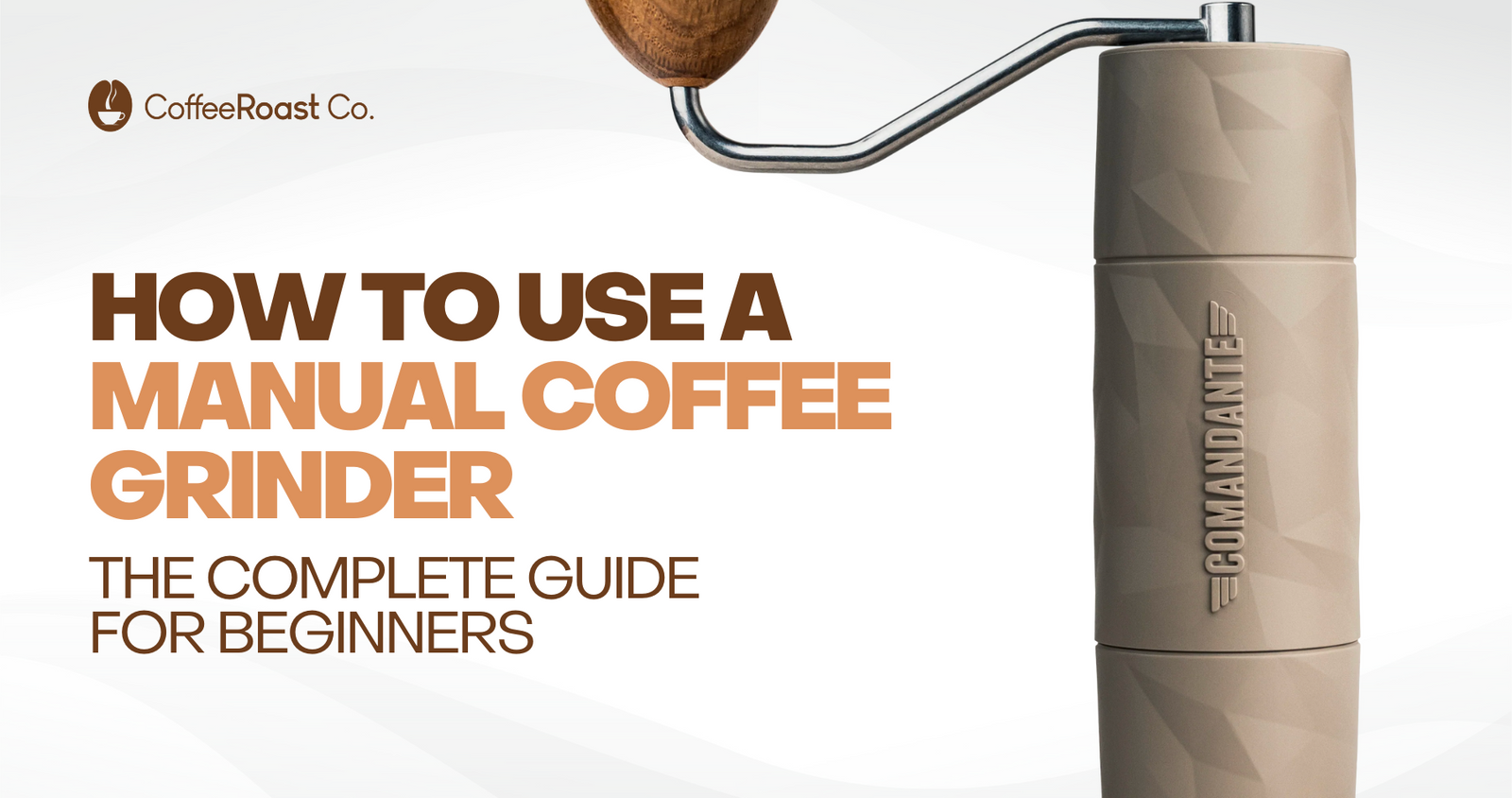

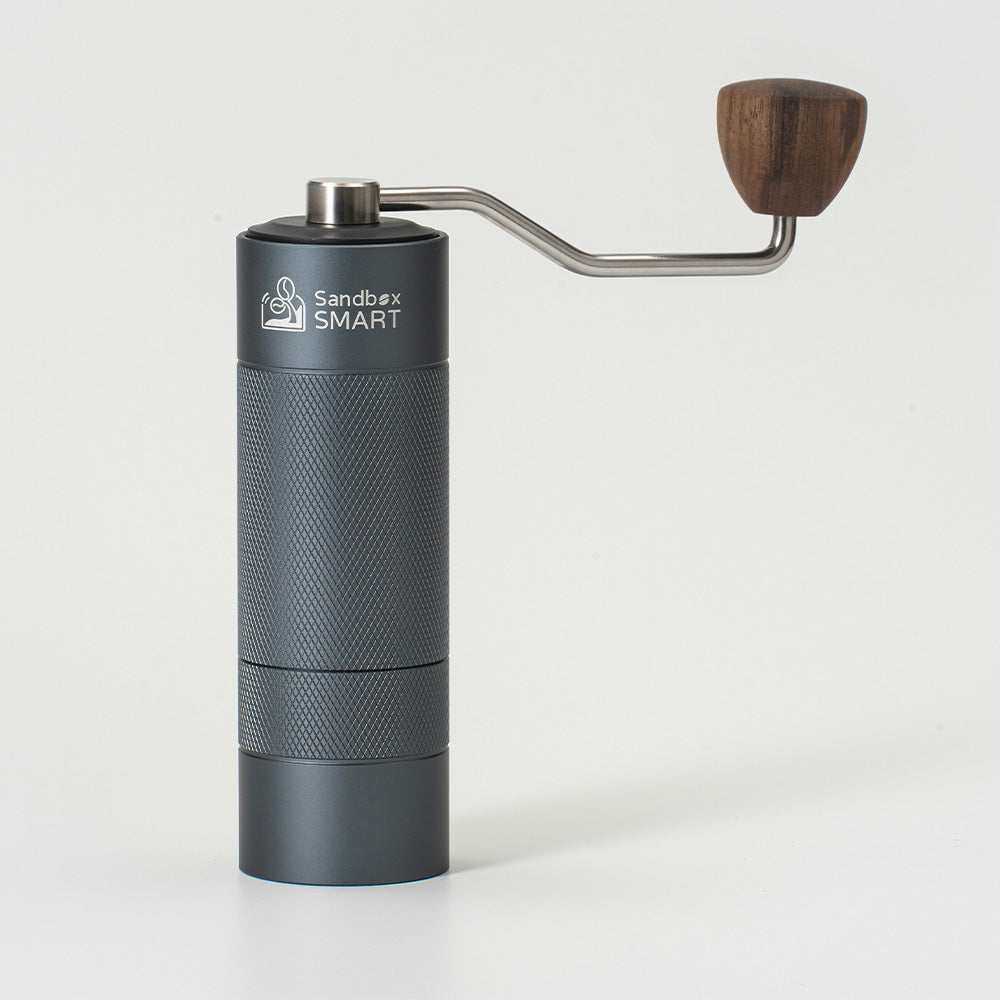

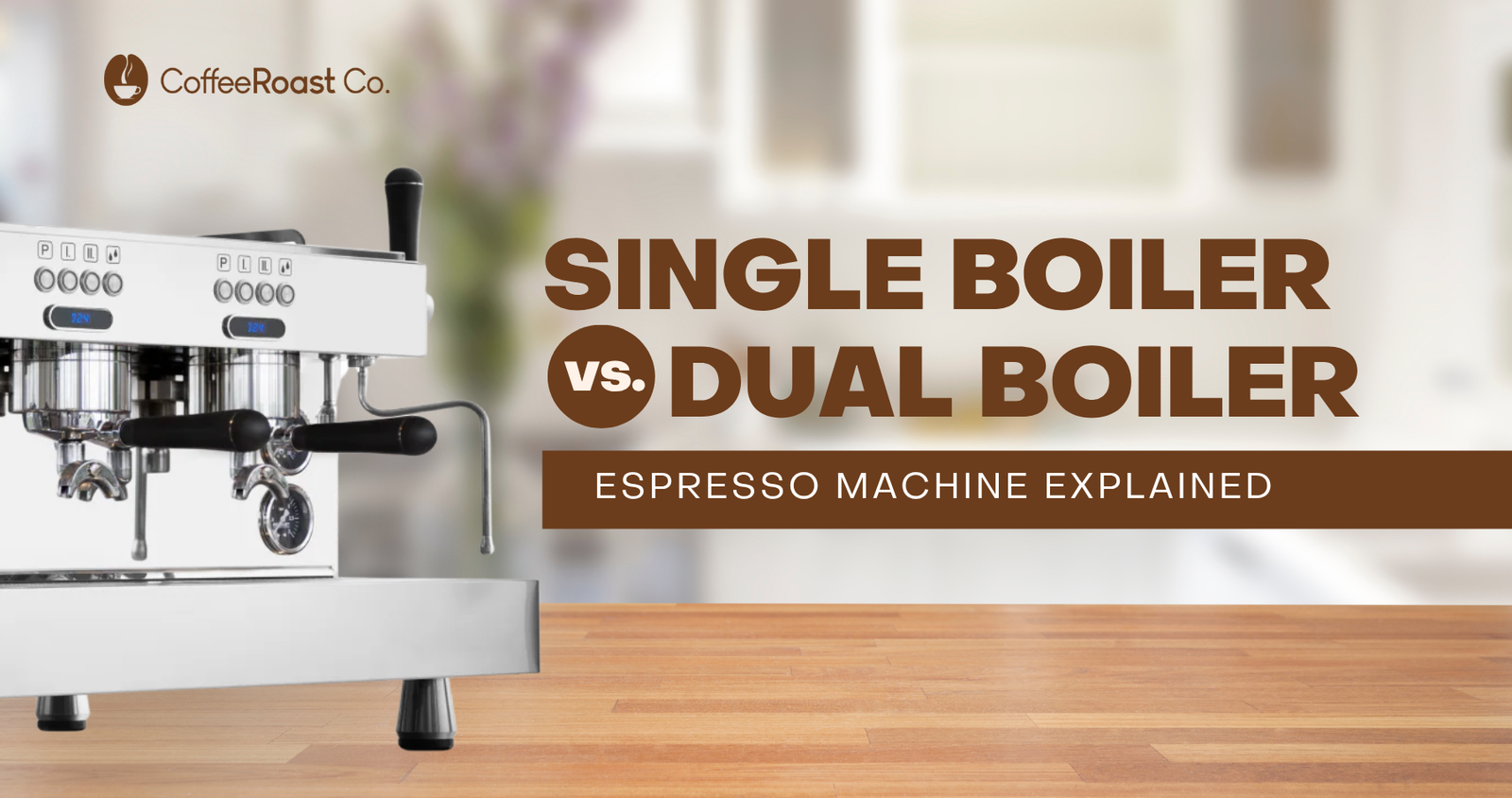

Leave a comment